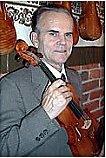Earlier this week scientists reported a strong correlation between obesity and the risk of common cancers, such as cancer of the colon and breast cancer. Today, initial findings from a US study suggest that eating less protein could be a way to protect some people from cancers that are not directly associated with obesity.
The research is published in the December issue of the American Journal of Clinical Nutrition (2006, 84, 1456), shows that lean people on a long-term, low-protein, low-calorie diet or participating in regular endurance exercise training have lower levels of plasma growth factors and certain hormones linked to cancer risk. “However, people on a low-protein, low-calorie diet had considerably lower levels of a particular plasma growth factor called IGF-1 than equally lean endurance runners,” says Luigi Fontana of Washington University, “That suggests to us that a diet lower in protein may have a greater protective effect against cancer than endurance exercise, independently of body fat mass.”
“Our findings show that in normal weight people IGF-1 levels are related to protein intake, independent of body weight and fat mass,” Fontana says. “I believe our findings suggest that protein intake may be very important in regulating cancer risk.”
Fontana says most of us don’t eat nearly enough fruits and vegetables or enough whole-grains, cereals or beans. “Many people are eating too many animal products – such as meat, cheese, eggs and butter – as well as refined grains and free sugars,” he says. “Our intake of vegetables and fruits is low, and beans are vastly underconsumed in the U.S. and Europe these days.”
He believes diets would be healthier if we ate more whole grains, beans, fruits and vegetables and far fewer animal products. He recommends mostly fish, low-fat dairy products and, occasionally, some red meat. Such a diet would both cut total calories and reduce the amount of protein we consume to healthier levels.
“Eating too many calories increases our risk of developing obesity, diabetes, cardiovascular disease and of certain types of cancer related to obesity,” Fontana adds, “We hope to further clarify what happens to cancer risk when we are chronically eating more protein than we need.”
 Infrared and NMR spectroscopy have possibly revealed one of the great secrets of the violin makers Stradivari and Guarneri del Gesu – they used chemical wood preservatives to help preserve their instruments and to improve the tonal quality. The discovery could help modern-day violin makers emulate more closely the properties of irreplaceable violins from the 18th Century and well as providing music conservationists with new insights on how to best preserve the antique instruments.
Infrared and NMR spectroscopy have possibly revealed one of the great secrets of the violin makers Stradivari and Guarneri del Gesu – they used chemical wood preservatives to help preserve their instruments and to improve the tonal quality. The discovery could help modern-day violin makers emulate more closely the properties of irreplaceable violins from the 18th Century and well as providing music conservationists with new insights on how to best preserve the antique instruments. A new study reveals that the static snapshots recorded in protein crystallography may be missing the bigger picture. Investigations of a bacterial protein using cryomicroscopy shows the protein in a balloon-like mode previously hidden from sold state studies. The discovery suggests that techniques complementary to X-ray crystallography are essential if molecular biology is to gain a complete understanding of protein structure.
A new study reveals that the static snapshots recorded in protein crystallography may be missing the bigger picture. Investigations of a bacterial protein using cryomicroscopy shows the protein in a balloon-like mode previously hidden from sold state studies. The discovery suggests that techniques complementary to X-ray crystallography are essential if molecular biology is to gain a complete understanding of protein structure.  Breast cancer remains the most common form of cancer among women but screening with mammography involves exposure to ionising radiation and suffers from a high rate of false positives that then require a definitive assay. In the December issue of the journal Biopolymers, researchers in India describe how Raman spectroscopy might be used to discriminate between normal, benign, and malignant breast tissue and so provide a simple and relatively non-invasive complement to a suspicious mammogram.
Breast cancer remains the most common form of cancer among women but screening with mammography involves exposure to ionising radiation and suffers from a high rate of false positives that then require a definitive assay. In the December issue of the journal Biopolymers, researchers in India describe how Raman spectroscopy might be used to discriminate between normal, benign, and malignant breast tissue and so provide a simple and relatively non-invasive complement to a suspicious mammogram.